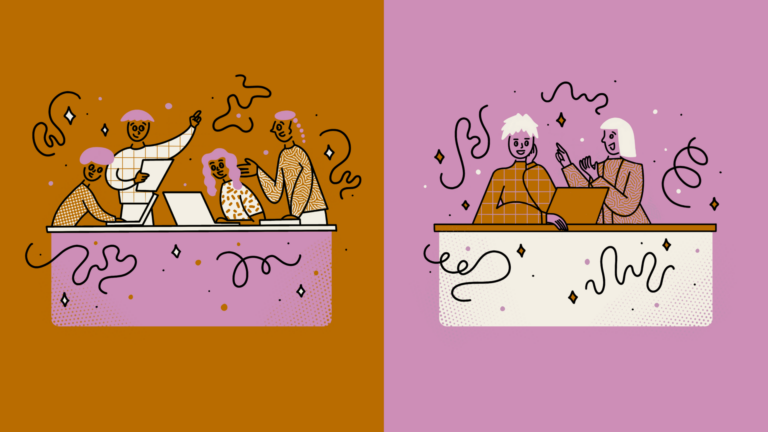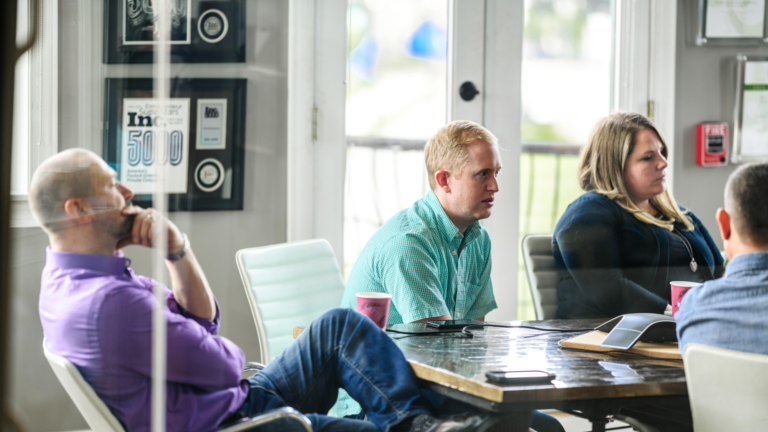UX consulting principles: Find the right consulting partners and do better work

Over the past several years, it’s become apparent that the value we provide at Think Company is based not only in the world-class design work we deliver, but equally (if not more so) in the way we interact with our clients.
You might be surprised how often we find situations where it’s clear that no previous design agencies have engaged with our clients in anything resembling a consultative fashion. Stories of firms simply executing on a statement of work or delivering the rote set of deliverables are common. Simply doing something because this is the way we’ve always done it is par for the course.
We don’t work that way, and that’s why we’re sharing the importance of consulting in UX design and the 7 principles we’ve found that help us cultivate excellent working relationships and create better digital solutions with our clients.
The importance of consulting in UX design
As we mentioned, working as consultants means we don’t live in a project bubble. As a consulting firm, we work collaboratively with clients to address and uncover their challenges and lay out a plan that addresses those problems holistically.
The challenge is that most of our clients ask us to help them solve problems that may manifest themselves in designed solutions but whose roots are far deeper. For this reason, we’ve had to focus more and more on the consulting side of our work—building trusting relationships with our clients, making strong business arguments for proposed solutions, and generally taking a much more holistic approach to our work.
So, what’s different about working with a UX design firm that has real consulting chops versus a UX agency that simply delivers on project work? You might not get exactly the solution you thought you needed, but we promise it’ll be the right solution. You’re not just receiving a deliverable but creating a trusted relationship to set you and your team up for success.
Principles of UX consulting
While there are many principles that help create a positive client-consultant relationship, we’ve uncovered 7 principles that make the biggest difference to organizations that hire us. Let’s dive in.
1. Practice empathy
Our clients (you), have your own thoughts, needs, and challenges associated with a project.You’ve also likely got your own set of objectives and goals. And you’re reporting back to internal stakeholders who have their own set of expectations. Hopefully you’re all aligned, but projects aren’t always that straightforward (we know). Working with our clients to truly understand internal pain points and planning to help you share project roadmaps, explain blockers, and define success creates an excellent partner and consultant relationship.
2. Identify a clear shared purpose
Establishing a clear purpose from the beginning is key. We’ll have conversations to better understand the purpose behind your goals and objectives. Open, honest dialogue from the beginning will allow us to align on objectives and avoid any potential misalignment down the road.
3. Develop situational awareness and communicate well
Regular pulse checks with clients and stakeholders allow us to understand initial priorities and possible shifts. Creating an open dialogue and space for you to share external factors impacting the project work will allow us to understand the whole picture and communicate necessary information to help the team work effectively.
4. Make informed decisions
Strategy sessions or focused team time and debriefs will allow us to address concerns and progress to ensure informed decisions are being made. Communicating any blockers or unexpected challenges with clients and teams (and vice versa) can ensure we’re all on the same page as we make adjustments.
5. Ensure everyone understands the drivers, rationales, and tactics
Clear and effective communication is vital to the success of any engagement. Our team shouldn’t live in a bubble; they should be involved in conversations with you to understand the rationale and scope of the engagement fully. Of course, the entire team won’t be on every call—we’ll set regular team-wide touchpoints and communicate internally if something important arises.
6. Model accountability
You’re more than a client when working with Think Company, we’re partners in the engagement. Creating an honest, open dialogue and relationship to help you reach your goals is vital (we can’t state that enough). Trust is important, and actions speak louder than words. To model accountability, we’ll need to be clear about what our team will be doing—and deliver. If the leading consultant is accountable, the team will follow suit.
7. Bring an attitude that supports successful relationships
Lead by example. It seems obvious, but we’ll make sure conversations are productive and collaborative. We don’t take on a project to do the work and hand it back to you; we want to work collaboratively with you and your team to ensure we hit the mark, build a positive relationship, and set you up for success. No project runs smoothly 100% of the time. When faced with challenges, we’ll confront them head-on with honesty and integrity, and work together to find a solution that works for everyone.
Putting your consulting principles into practice
If you’re looking for a design and development partner be sure to ask about their consultative approach. Even in small or well-functioning organizations, having consulting guidelines in black and white can provide a helpful touchstone when questions arise or the going gets tough. Wouldn’t you rather work with an organization willing to put the time in to provide you with the right solutions?
Our team of consultants is excited to work with clients to ensure the challenges are being addressed holistically. Are you ready to start your next project? Let’s chat!
. . .
Updated on November 16, 2023



